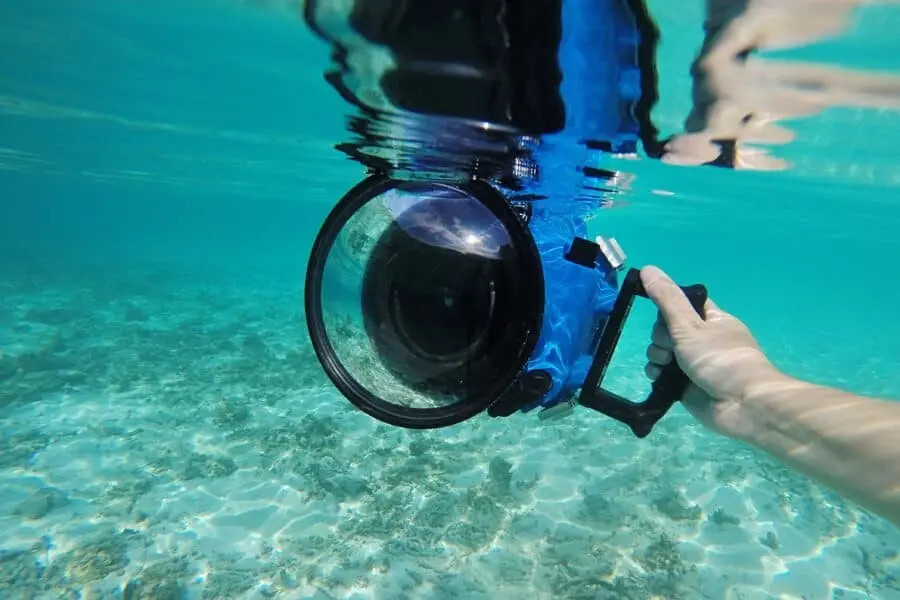How To Film On Water
I think, at the end of the day, filmmaking is a team, but eventually, there’s got to be a captain.
-Ridley Scott
How To Film On Water
Water is great for many things like fishing, surfing, swimming or paddling. However, filming on the water can be stressful if all if you’re not fully prepared with safety, gear protection, and the proper technique. Especially when using expensive equipment that doesn’t exactly work well when it gets wet. This is article is here to help you get started.
Did you know that we also host Virtual Workshops? Check out what we have coming up! And if you ever need people for your next project, our Cast and Crew lists are full of amazing local talent.
How To Be Safe
First things first, safety. There are additional safety considerations when working near or on the water, and you definitely shouldn’t take it lightly. A smooth shoot can be made possible by practicing good risk management and being prepared for anything that might happen. Make sure to plan accordingly! Or else your great day of shooting will turn into a disaster.
Communication
Your cell phone may not work in many situations, especially the further out in the water you get. Having an alternative way to communicate with people on land is a necessity. This can include a satellite phone, a two-way device, like the Garmin InReach, or a personal locator beacon, such as a ResQLink or SPOT device. Be aware of the limitations in communication where you will be shooting.
Medical Kit
When you’re out in the middle of nowhere, it’s essential that at least one person on your team is proficient in CPR and first aid. You never know what might happen when you’re out on the water. Make sure you have a fully-stocked first aid kit. Having a lifeguard isn’t the worst idea either.
Weather
This is a good thing to be aware of whenever you’re shooting outside, but especially when you’re not on land. You should always be aware of possible storm activity when you are out shooting outdoors. You can find relevant information at the NOAA’s Marine Forecasts website.
General Boat Safety
I mean, I’m pretty sure this is a law in most places but make sure you have enough lifejackets for everyone on board and a couple extra. To keep you attached in the event of rough water, consider using a tether and having someone else drive or steer while you are shooting.
Tides
Take note of the tides! You’re shooting can be affected by either tides or tidal flows. If you are using a boat, make sure you check the currents and the depth of the water.
How To Get The Most Out Of It
Although every shoot is unique in terms of subject matter, style and substance, there are a few things you can do to help yourself when filming near or on the water.
Keep Things Dry
Make sure everything is dry. I’m sure by now we all know that water and electricity don’t mix, but did you also know that water and paper don’t play well with each other either? If you’re bringing a shot list, script, contract, etc. it might be best to laminate them. Water is water, and it likes to get everywhere very quickly. Dry bags and dry cases are great, but you might be able to get away with a Ziploc bag if you’re careful and on a budget.
Know The Rules
This comes up a little often, but who likes getting fined? Make sure you have permission to film, or that you don’t need permission to film. You need to be familiar with all the rules and regulations in your area, including restrictions on speed, wake and group size.
Be Organized
I mean, this goes without saying, but let’s say it anyway. Have a plan and organize all your gear so you don’t have to on the day in the middle of the water.
Scout
To understand the changes in the sun and shadows throughout the day, visit the area you want to shoot, to determine which angles and locations you would like to shoot from, as well as to identify any roadblocks that could hinder your shoot.
More Filmmaking Articles
What You Need
Finally, what you need to complete your shoot successfully. When shooting on water, stability and water (surprise surprise) will be your biggest issues. The type of shots you are trying to capture and whether or not you plan to submerge your camera completely will affect the gear you choose. Obviously, if you do choose to go completely underwater, you’re going to need much more gear. Things will get more complicated and more costly if errors are made. The good news is, you’re not the first person ever to do this!
You will need to find a way to prevent water from affecting your camera’s mechanism. If you have a waterproof camera (such as a GoPro), then great! For those of you who don’t you can rent or purchase a waterproof housing to protect your camera. This housing will depend on what camera you are actually using. They typically have to be specifically designed for the camera in particular. Make sure you test out the housing before shooting though! It may have a small crack or leak in it. So do a test run with nothing inside and see if water found its way inside.
Dry bags and plastic bags can also be used to protect other equipment such as lighting equipment or battery packs during the shoot.
Water is always moving, and that can cause issues for your shot if you’re not prepared with how you’ll stabilize your image. You can use an in-camera vibration reduction feature or stabilizer, but you should also consider bracing your body with other objects or the boat. However, having your frame bob around naturally gives the audience a feeling that they’re, well, on water. So it’s not always the worst thing.
Here are some items we think you should have with you on this kind of shoot day:
- Floatation devices or tethers for your gear so that they don’t accidentally fall in the water.
- Bring a red lens filter to take out the overwhelming blue of the water
- A polarizing filter will reduce the glare in the water.
- Also, just some common housekeeping items like sunglasses, sunscreen, bathing suit, towels, etc.
Did You Get Some Great Water-Filled Shots?
I hope you learned a thing or two from this article! Shooting in and on water can be tricky, but well worth it in the end. Always just make sure to think ahead and prepare yourself for every possibility.
While we’re at it, you should check out more of FilmLocal! We have plenty of resources, cast and crew, and job opportunities. Not to mention a ton more useful articles. Create your free FilmLocal account today and give your career the boost it deserves!




